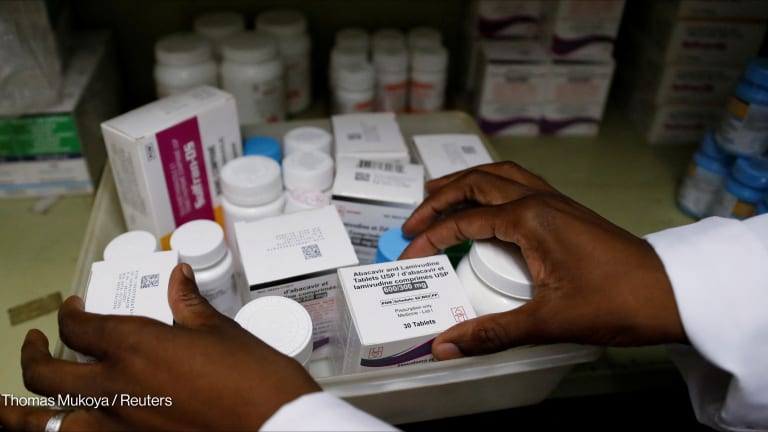
CANBERRA — After more than six decades of contributing to the delivery of Australia’s aid program, the new strategy for the Australian Volunteers Program will seek to measure its impact in concrete ways.
Looking beyond the experience of volunteers, the new strategy seeks to gather longitudinal data to highlight long-term impact, as well as the benefit to partner organizations using volunteers to support their in-country development.
“The volunteer program is diverse — which is a strength. But how do we then tell the story of impact?”
— Zoe Mander-Jones, program director, Australian Volunteer ProgramTo measure impact against Australian aid priorities, the strategy has introduced three priority areas of impact: economic growth; human rights; and climate change, disaster resilience, and food security.
The new strategy has been a year in the making since the launch of the new volunteer program, managed by Australian Volunteers International, in February 2018. Zoe Mander-Jones, program director at AVP, explained to Devex the thinking behind it and how it will be used to continue improving the volunteer experience over the coming decade through impact, communication, and reach.
Measuring the impact of volunteering
Between 2018-2022, the new strategy will see AVP continue to support Australian aid with 5,000 volunteers working in 26 countries and more than 700 partner organizations with a budget of 190 million Australian dollars ($133.6 million). Ninety-seven percent of volunteers will work to support the Indo-Pacific region, in line with the Australian aid program focus.
Yet the new strategy’s focus is not in the high-level numbers — a priority for focus is on measuring impact. The value of volunteering, Mander-Jones said, was “different” to other aid investment and measurement and impact needed to move beyond volunteer case studies.
“We know Australians gain from this life-changing experience, so we’re looking at how Australian gains personally and professionally to measure that, learn from it, and support it in a more explicit way,” Mander-Jones said.
More on Australian aid:
► Rethinking inclusion in Australian aid projects
► A checklist for engaging the Australian government in humanitarian action
► Australian aid: The financial impact of a new government revealed
The current contract managed by AVI covers the five years to 2022 with the option for a five-year extension, giving it the opportunity to plan for 10 years of programs and data that comes with it. This will be used to develop a longitudinal study of volunteers that will help to embed learning in the program around personal and professional gain.
Beyond the value to volunteers, impacts on improved capability and benefits to the partner organizations — which include local governments, NGOs, and the private sector — will be measured.
“There is a new mechanism we’re calling a partnership plan,” Mander-Jones explained. “This is working with a partner on a three-year plan around their capacity development needs, how they think the Australian volunteer program can support that. Through this, we are trying to bring a focus and reporting on capacity development over [the] long term rather just individual volunteer assignments. We still have exit interviews and monitor individuals, but now we want to go beyond that as well.”
Increasing the reach
Australia’s volunteer program has worked to improve its reach through inclusion — including disability inclusion. This work will continue and expand, with Mander-Jones explaining that the volunteer program aims to be more representative of the Australian population.
“We are asking how representative the program is of our indigenous population, of our rural population, of LGBTIQ populations — so really looking at inclusion from a very broad sense,” she said.
An “injection of effort” will focus on diversity, with an initial focus on disability and indigenous inclusion. And Mander-Jones said work will assess the barriers the program itself may create to inclusion.
“Our partners tend to want people with more qualifications and more experience which is important — volunteers should not put local people out of a job. But how does that measure up with youth? That is something we will be looking at.”
Other barriers created — including financial barriers, family barriers, and career barriers — will be studied to determine whether this is impacting on the volunteer program being representative.
By improving reach throughout more diverse sectors, this will also help with another key aim — improving awareness of both the program and understanding of development challenges.
Communicating the volunteer program
The third key objective is improving communication and the story of the volunteer program. The strategy aims to be a key part of this communication by creating clarity around the principles, objectives, and impact.
Six guiding principles have been established to improve communication. The principles include valuing volunteering; supporting locally led capacity development; building strong relationships and partnerships; embracing innovation; enhancing diversity and inclusion; and accountability and learning. The strategy will communicate against the three impact areas listed above.
“That was decided from a very strong strategic leadership lens from DFAT [Department of Foreign Affairs and Trade] looking at a number of high-level contexts — the Foreign Policy White Paper was one of them, the government membership of the [United Nations] Human Rights Council was another one as well as the Pacific ‘step-up,’” Mander-Jones said. “The volunteer program is diverse — which is a strength. But how do we then tell the story of impact?”
With the strategy now out, Mander-Jones said more effective communication can begin with partner organizations, volunteers, and more to continue bringing more volunteers into the program and making development impacts through one-on-one engagement.








